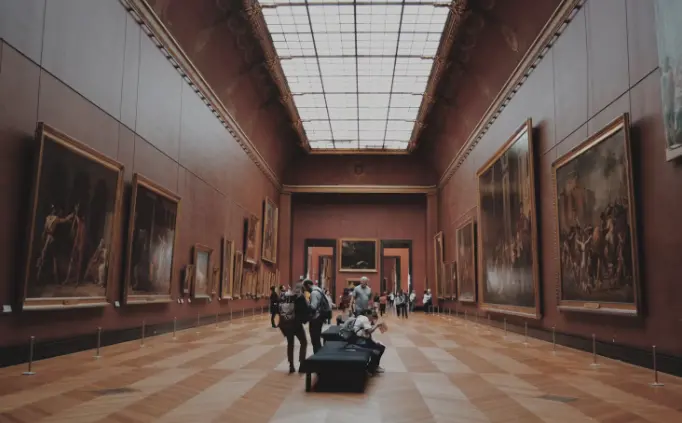From London’s institutions to the iconic Parisian precincts, discover the metropolises with the highest concentration of museum treasures that preserve and share the richness of global cultural heritage.The metropolises that hold the greatest museum treasures.
Museums are not only repositories of artifacts and works of art, but windows to past, present and sometimes future worlds that allow us to explore the diversity and vastness of the human experience. These sanctuaries house priceless treasures that play a vital role in the transmission of knowledge, as well as being indicative of the rich cultural heritage and commitment to heritage preservation in each region.
Here are some of the cities with the most museums in the world:
London, bastion of universal culture.
With its long history of world exploration, the capital of the United Kingdom is a melting pot of cultures and an academic epicenter with an impressive number of museums. The British Museum, founded in 1753, is one of the oldest and most revered in the world; it houses a vast collection, from one of the most important modules of Ancient Egypt to masterpieces from all periods. Other highlights include the National Gallery, with more than 2,300 paintings from the 13th to the 20th century; the Tate Modern, with one of the most comprehensive collections of contemporary art in the world; and the Natural History Museum, with more than seven million specimens and objects on display.
Paris, city of light and art
The City of Light also shines as a cultural beacon. The Louvre, home to the Mona Lisa and the Venus de Milo, is perhaps the most famous museum in the world; however, the Musée d’Orsay, housed in a former train station, exhibits the world’s largest collection of Impressionist and Post-Impressionist art with works from 1848 to 1914. In addition, with its avant-garde architecture, the Pompidou Center has an outstanding modern and contemporary collection that includes more than 100,000 works by artists such as Picasso, Miró, Modigliani, Matisse, Monet, Bacon, etc.
New York, museums beyond the reach of the imagination
The city that never sleeps is also the city that never stops offering cultural experiences. The collection of the Metropolitan Museum of Art (Met), one of the largest museums in the world, spans 5,000 years of history in more than two million works, from classical antiquity to avant-garde and contemporary art. Likewise, the Museum of Modern Art (MoMA) is one of the most visited museums in the world and presents masterpieces by artists such as Van Gogh, Pablo Picasso, Jackson Pollock and Andy Warhol; while the American Museum of Natural History captivates science and history lovers with its more than 34 million specimens in 46 permanent exhibition halls.
Berlin, where history and art merge
The German capital is home to a vibrant art scene. The Museum Island, a UNESCO World Heritage Site, is home to five museums including the Pergamon Museum, with its famous replicas of the Pergamon Altar, the Ishtar Gate of Babylon and the Market Gate of Miletus. In addition, the Old National Gallery features an impressive collection of 19th century European art.
Mexico City, cultural heart of Latin America
Rich in history and tradition, Mexico City exemplifies the country’s multiculturalism in its more than 200 museums and galleries, being the second metropolis in the world (after London) to house the largest number of these venues. Among them is the National Museum of Anthropology, which presents Mexico’s cultural diversity from ancient civilizations to the present day; in the Coyoacán neighborhood, the Casa Azul, home of Frida Kahlo, is a museum dedicated to the life and work of the iconic artist, and the Museum of Modern Art offers a contemporary look at the Mexican art scene since the 1930s.

